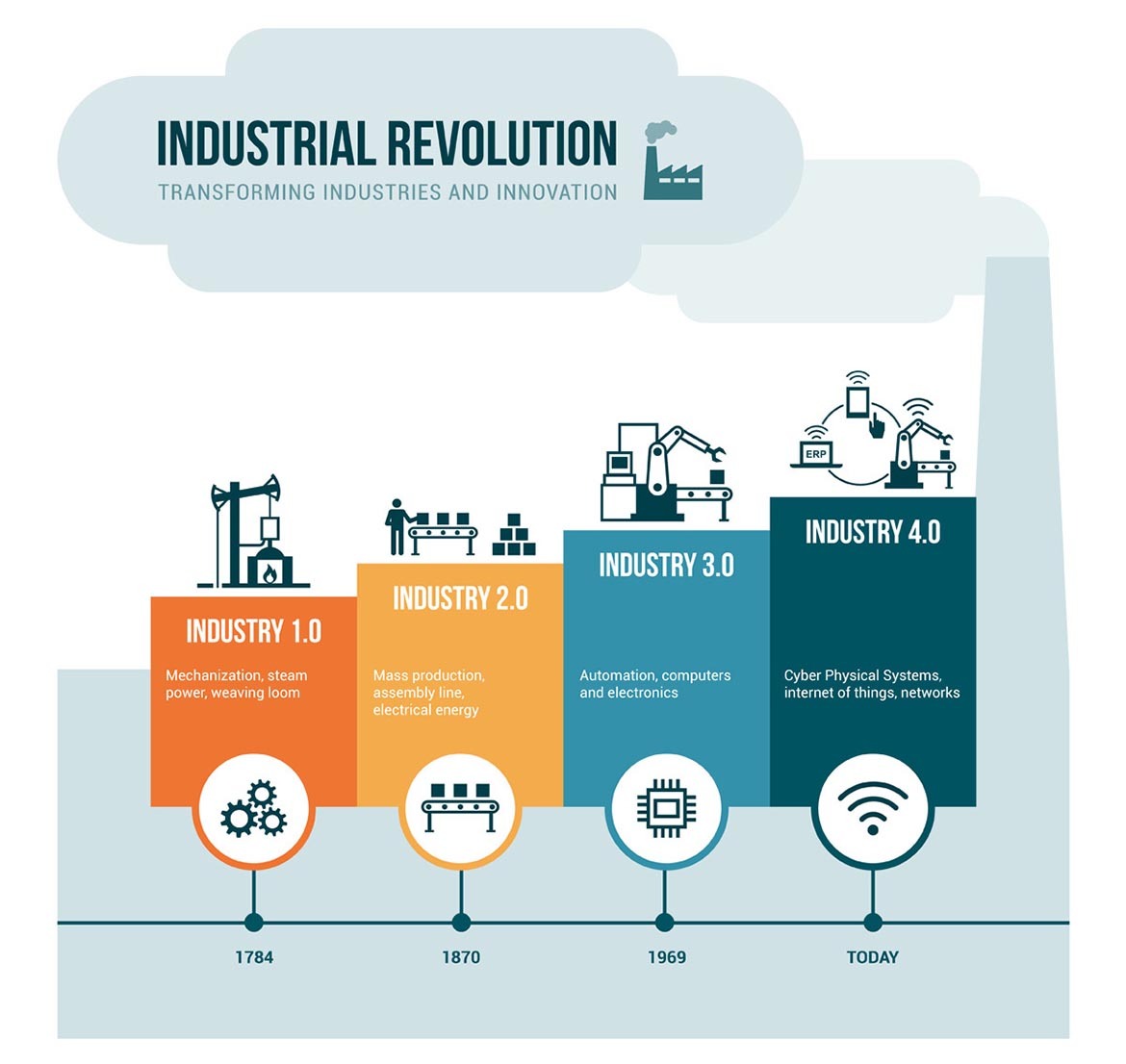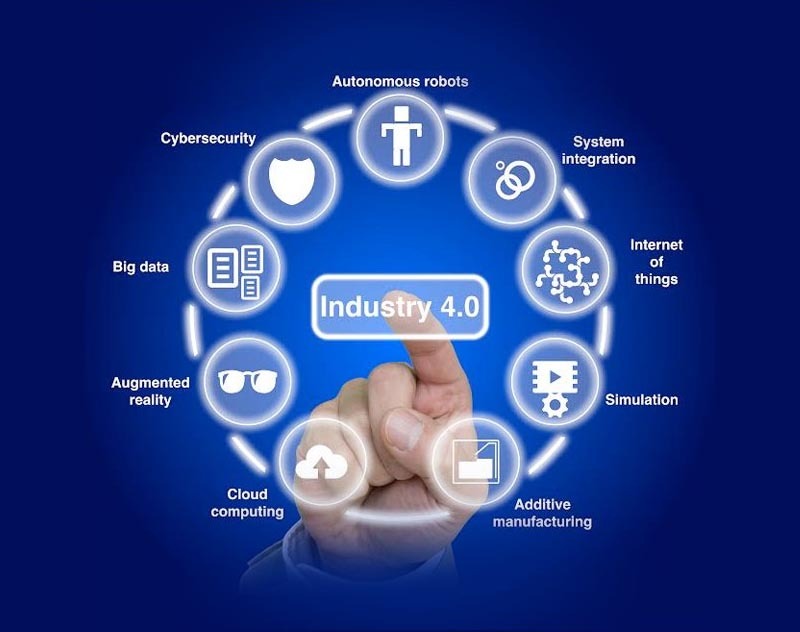Aerospace 4.0: the Fourth Industrial Revolution Applied to Aerospace!

Header image bought from istock.com: copyright.
Introduction
For those who are wondering about the fourth revolution or Industry 4.0, it has been going on for some time now. The exponential evolution of artificial intelligence, big data and cloud computing has forced industry to change and push forward.
History
The first industrial revolution began in 1784 when the steam engine was used to operate machinery in the textile and metallurgy industries. The second revolution saw the emergence of large corporations, powered by electricity. In 1969, the third revolution was brought on by automation, computers and electronics.

The fourth revolution, called Industry 4.0, is taking place right now.
Industry 4.0
Industry 4.0 encompasses nine technologies that combine to revolutionize manufacturing production:
- Autonomous robots: they learn from humans by working with them. They become autonomous and interact with other robots. Their systems think, act and react to events while making more and more decisions. They perform more tasks at lower costs.
- Systems integration: data will move freely from one computer system to another. Software will coordinate all systems to ensure efficient production.

- The Internet of things: appliances and devices will be equipped with sensors, as will unfinished products. These devices will communicate with each other, enabling decentralized analyses and decision-making, while supporting real-time management.
- Simulation: designers and employees will be able to model and optimize equipment parameters through virtual reality, reducing equipment preparation time. Some of the employee training will be done in virtual reality, which will reduce the risk of accidents.
- Additive manufacturing: used in prototype production, additive manufacturing will serve to produce parts in smaller batches. These parts will be manufactured within the plant as needed, reducing handling and transportation costs.
- Big data: the analysis of massive data from computer systems, the Internet of things, suppliers, customers, etc., will be used to identify trends, issues and inefficiencies in order to optimize production and processes.
- Cloud computing: all the data collected will be stored in the cloud to facilitate data sharing between sites and businesses.
- Cybersecurity: Big data, corporate intellectual property, customer data, and other accumulated data in cloud computing must be protected from cyber-attacks. Sophisticated identification and access systems will be put in place in order to ensure secure communications.
- Augmented reality: this will offer businesses a new range of services. Employees, for example, will have real-time access to information they need to perform their work.
Experts believe that it will take another 20 years to set up the 4th industrial revolution.
Aérospace 4.0™
As Industry 4.0 will revolutionize the global manufacturing industry, AÉROÉTS—a group that promotes and integrates aerospace education and research activities at ÉTS—launched a new integrated research and education program in May 2016 called Aerospace 4.0™. This program was designed to meet the aerospace industry needs pertaining to research and development, education and continuing education.
On March 13, 2018, Professor Hany Moustapha, director of the AÉROÉTS group, will give a lecture on the Aerospace 4.0™ program as part of the ÉTS graduate evenings (Soirée des cycles supérieurs).
A More Electric Aircraft
One specific application of Aerospace 4.0™ involves the “more electric aircraft.” The research project focuses on evaluating, through offline and online simulations, different types of aircraft propulsion architectures to reduce the aviation industry’s fuel consumption, environmental footprint and air emissions. This research project will also be presented on March 13, 2018 by Professor Ouassima Akhrif from ÉTS.



